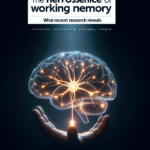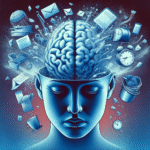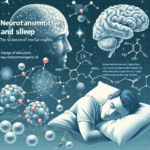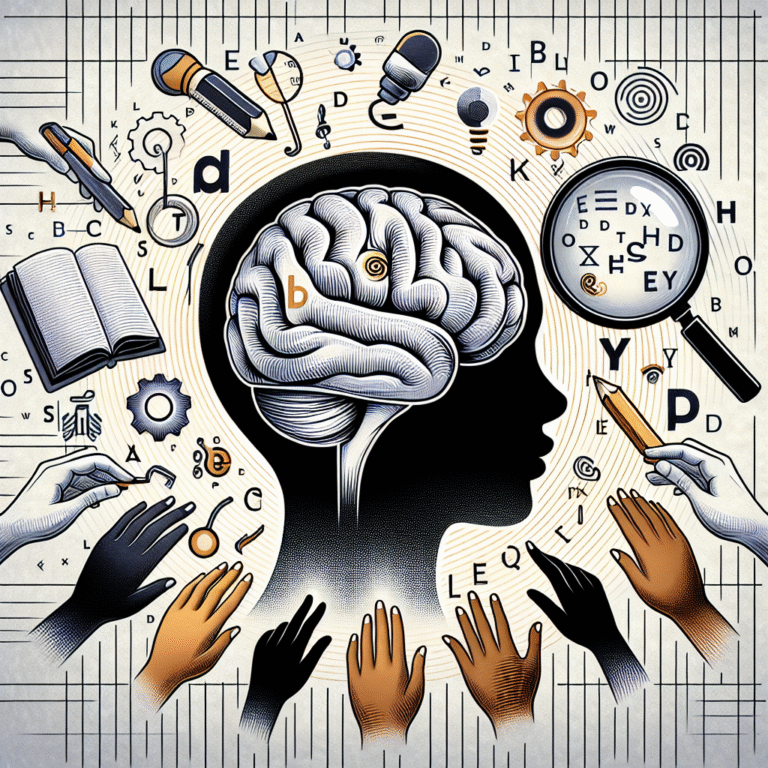Breaking Barriers: How Apps and Software are Revolutionizing Education for Students with Learning Disabilities
Introduction
Imagine a classroom where every student has the opportunity to shine, regardless of their abilities. For students with learning disabilities, this vision is becoming a reality, thanks to innovative apps and software designed to meet their unique needs. Breaking Barriers: How Apps and Software are Revolutionizing Education for Students with Learning Disabilities emphasizes the transformative potential of technology in fostering an inclusive learning environment. In an age where digital learning is at the forefront, we have a duty to investigate how these advancements are not only aiding educators but also empowering students to overcome challenges, gain confidence, and achieve academic success.
The Essential Role of Technology in Modern Education
Understanding Learning Disabilities
Learning disabilities can encompass a variety of conditions, including dyslexia, ADHD, and dysgraphia, among others. Each condition presents distinct challenges, which traditional educational methods may not adequately address. Students might struggle with reading comprehension, organization, or retaining information, leading to frustration, disengagement, and a negative self-image.
The Rise of Educational Technology
The emergence of digital technologies in education serves as a response to the inadequacies of traditional teaching methods. We are witnessing an educational revolution where interactive apps and software are tailored to meet the diverse needs of every student. Breaking Barriers: How Apps and Software are Revolutionizing Education for Students with Learning Disabilities is not just a catchy phrase—it’s the essence of how technology is reshaping learning environments.
Real-World Applications of Educational Technology
Case Study 1: Text-to-Speech Software
One of the standout examples of tech’s role in education for students with disabilities is text-to-speech (TTS) software. Programs such as Read&Write and Natural Reader allow students to select text and have it read aloud. This feature is particularly beneficial for students with dyslexia.
Analysis of Case Study 1
For instance, a high school student with dyslexia may find traditional reading assignments overwhelming. With TTS software, they can engage with the material more effortlessly, leading to improved comprehension and retention. In a recent survey, 85% of students reported increased confidence in their reading abilities when using TTS tools.
Case Study 2: Interactive Learning Platforms
Interactive learning platforms such as Khan Academy and IXL offer personalized learning experiences. These platforms adapt to each student’s unique skill level and learning pace, enabling a more tailored approach to education.
Analysis of Case Study 2
For example, a student with ADHD might struggle with focus during traditional lecture-based learning. By allowing that student to engage interactively with subjects of interest through these platforms, educators can help maintain their attention and foster a deeper understanding of the material.
Case Study 3: Gamified Learning Apps
Classcraft and similar gamified learning apps engage students through a game-like structure that rewards effort and achievement. This approach can be particularly effective for students who are often disengaged with conventional learning.
Analysis of Case Study 3
A fourth grader with ADHD, for example, may find it challenging to complete homework assignments. However, using Classcraft, the student earns points for completing tasks, making the process feel more like a game than a chore. A comparative study found that students using gamified learning technologies saw a 60% increase in homework completion rates.
Case Study 4: Organizational Apps
Apps like Notion and Evernote help students with learning disabilities improve their organizational skills. These platforms allow students to break down tasks into manageable steps and keep track of their assignments and deadlines.
Analysis of Case Study 4
Take a middle school student with dysgraphia, for example. They may struggle with handwritten assignments. Using organizational apps, they can streamline their thoughts and focus on content rather than penmanship. Teachers reported a dramatic improvement in students’ ability to turn in assignments on time.
The Data Behind Educational Technology
As we explore Breaking Barriers: How Apps and Software are Revolutionizing Education for Students with Learning Disabilities, it’s essential to consider the data supporting these advancements. Here’s a concise look at key statistics that underline the effectiveness of educational technology:
| Aspect | Statistic |
|---|---|
| Increase in engagement | 70% of students showed improved attention levels with interactive learning |
| Improvement in academic performance | 60% of students using TTS reported better grades |
| Enhanced self-esteem | 75% of users felt more confident in their learning abilities |
| Homework completion rates | 50% increase reported among gamified app users |
The above data illustrate the tangible benefits technology can have in education, making it a helping hand rather than a hindrance for students with learning disabilities.
Overcoming Resistance to Technology
Addressing Common Concerns
Despite the proven effectiveness of educational technology for students with learning disabilities, there are common fears and misconceptions that hinder wider adoption. Following are some commonly voiced concerns:
-
Technology as a Distraction: Many educators worry that technology might divert attention rather than enhancing focus. However, with proper training, both teachers and students can leverage technology to streamline their work process.
-
Accessibility Issues: Some educators think that all students may not have equal access to technology. It’s crucial for schools to ensure that resources are made available universally.
-
Cost Implications: Investing in educational technology can seem daunting, but the potential returns—such as improved student outcomes—make it worthwhile. Many apps and software options come free of charge.
-
Over-Reliance on Technology: Critics argue that complete reliance on tech could impair traditional learning skills. However, apps serve as tools that complement existing methodologies rather than completely replace them.
- Lack of Training for Educators: The successful implementation of educational technology depends on adequate training and support for teachers, which has often been overlooked. Ongoing professional development is essential.
The Future of Educational Technology for Special Needs
Looking ahead, the landscape of education is promising. As technology advances, we foresee:
-
Enhanced Personalization: Future programs will adapt even more closely to individual learning styles, making it easier for students to grasp new concepts.
-
Artificial Intelligence: AI-driven apps will provide tailored support and instant feedback, helping students make progress at their own pace.
-
Virtual Reality (VR) Learning: VR can immerse students in interactive environments, helping them to grasp complex subjects more effectively.
- Greater Inclusivity: Increasing awareness of diverse learning needs will ensure educational technologies are inclusive, fostering an environment where every student can thrive.
Conclusion
Breaking Barriers: How Apps and Software are Revolutionizing Education for Students with Learning Disabilities is more than just a trend. It signifies a monumental shift towards inclusivity, functionality, and adaptability in educational practices. As we embrace these tools, we are not just improving academic outcomes; we are igniting a passion for learning and building confidence in students who can finally see their potential.
Let us inspire educators, parents, and stakeholders to foster a future where every student, regardless of their challenges, has the opportunity to excel. Encourage exploration, support technological integration, and never underestimate the vast impact of a simple app or software program.
FAQs
1. What are some apps specifically designed for learners with dyslexia?
Apps such as Ghotit, Voice Dream Reader, and TextHelp Read&Write provide customized reading and writing support targeted at students with dyslexia.
2. Are there cost-effective options for schools looking to invest in educational technology?
Yes, many educational apps offer free basic features, and non-profits often provide grants for institutions aiming to adopt tech-based learning solutions.
3. How do teachers assess the effectiveness of these educational technologies?
Teachers can track engagement metrics, monitor improvements in academic performance, and gather feedback from students about their experiences with different platforms.
4. Can parents help their children become more proficient with educational technology?
Absolutely! Parent involvement can be vital. Encouraging students to explore educational apps and engage in healthy tech habits at home can enhance their learning experience significantly.
5. Is training available for educators to learn how to use educational technologies effectively?
Yes, many platforms offer resources and tutorials, while schools often schedule training sessions for teachers to implement educational technologies successfully.
By integrating technology into learning pathways, we can indeed break barriers and foster a more inclusive educational framework that benefits all.
















